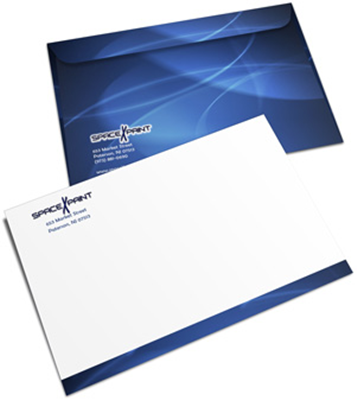The printing industry uses a number of special terms to describe or measure how a printed piece looks. Dot gain and TVI are two of these terms.
What is dot gain?
Dot gain is a measure of the difference between the actual ink dot size of the printed piece and the ink dot size specified by the source file. It refers to ink dots appearing larger on the printed piece due to either a mechanical or optical effect. Dot gain is not good or bad. It is simply a normal result of the printing process that must be taken into consideration during the creation of the source file, the choice of papers, printing process, inks, etc. If not taken into account, the result is a printed image that looks darker than intended.
 Illustration of Dot Gain Before and After
Illustration of Dot Gain Before and After
What is mechanical dot gain?
Mechanical dot gain occurs when paper fibers wick away the liquid ink, increasing the ink dot size. Like rolling out bakery dough to make pizza, it can also be the result of the ink dot being pressed and flattened by rollers during the printing process, increasing the size of the dot.
What factors affect mechanical dot gain?
The paper that is used, the ink, the ink color, the printing press, the roller pressure, and the press speed all can affect dot gain. Uncoated papers like newsprint have a higher dot gain than coated papers. For color printing, the dot gain will vary between colors. The dot gain for cyan, magenta, yellow and black will not be the same. Therefore, the dot gain for each color of ink used in the printed piece must be measured to accurately portray the dot gain for the piece. Web presses normally produce a higher dot gain than sheetfed presses.
What is optical dot gain?
Optical dot gain results when light is trapped under the edge of ink dots, making the image appear darker to the measuring device as well as your eye.
What factors affect optical dot gain?
A scanned image that looks fine on screen may be too dark for printing and my need to have its contrast curves adjusted. Optical dot gain (or loss) can be caused by the laser beam in certain equipment such as film imagesetters (recorder gain) and computer to plate systems. Depending on whether the process is positive or negative, a slight dot gain or a dot loss may occur. The type of material used for the plate or film may affect dot gain. In general, more dot gain will result from higher screen rulings.
Can dot gain be eliminated?
There will always be some degree of dot gain, but it can be minimized by our experienced prepress staff and our press operators using sophisticated software, calibration tools and production processes. Our trained staff of graphic designers take dot gain into account when designing pieces for our customers. Of course, if you are employing someone else to design your pieces it would be their responsibility to take dot gain into account.
How is dot gain measured?
Dot gain is expressed as the difference between the actual value and the intended value. What is being measured is something called a "flat tint" which is expressed as a percentage. For example: if the flat tint of the piece is measured at 60%, while the intended flat tint was 50%, the printed piece would have a dot gain of 10% (60%-50%=10%). Note the use of "%" is treated like a unit of measure such as inches, kilograms, etc. rather than a real percentage. A spectrodensitometer is used for accurately measuring dot areas. A densitomer can also be used but it is less accurate.
What is the difference between dot gain and TVI?
Dot gain and TVI are sometimes used interchangeably. TVI stands for Tone Value Increase which is a more general measure of the difference in value between the value specified in the source file and the value of the printed piece. Instead of measuring an increase in dot size, it measure changes in tone. It is used when individual ink dots are not used in the printing process to produce the printed piece. A tone reproduction curve provides a relationship between tonal value increase and dot gain.




